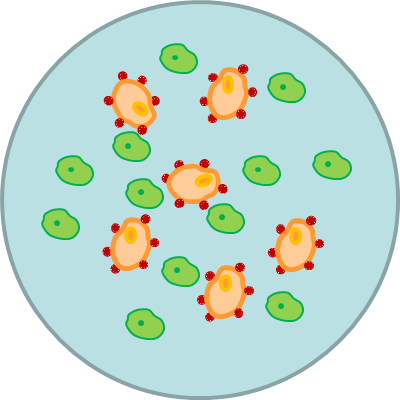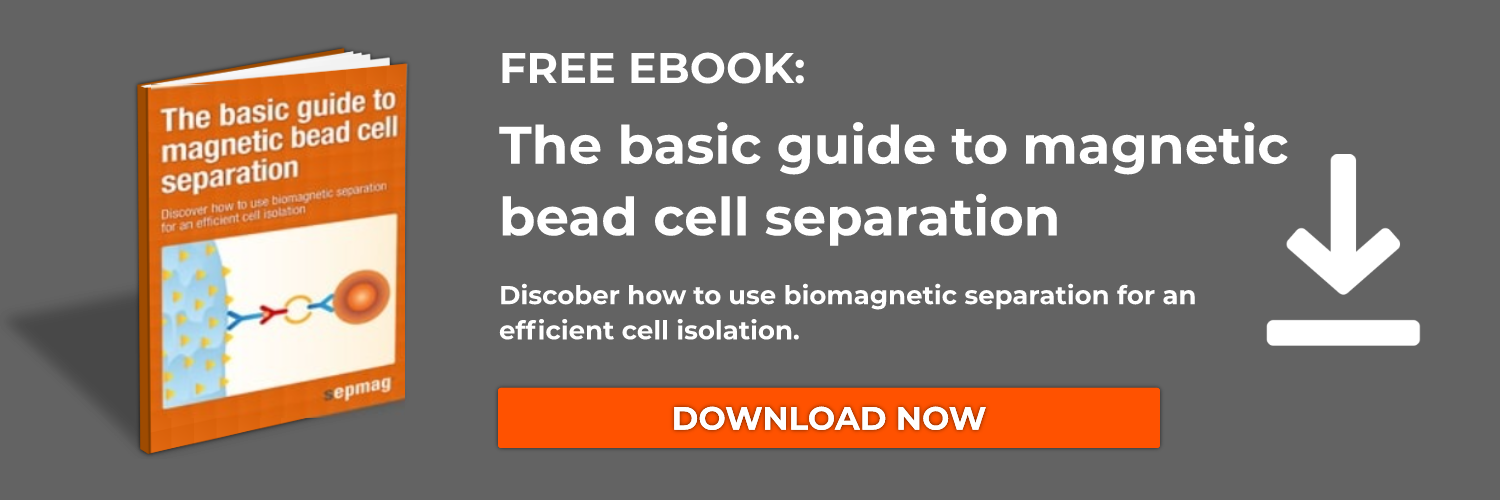Magnetic nanoparticles form the basis for capturing and separating molecules from a sample solution. The particles act as carriers, sequestering target molecules via attachment sites present on their surface, and shuttling them in the direction of an induced magnetic force. The attachment sites are customizable, endowing the particles with specificity and allowing them to be effective for a wide range of applications ranging from investigative to technological and biomedical.

Surface functional groups and biomarkers
In order to serve as carriers, magnetic particles need to be able to recognize their target from a mixed sample and attach to it successfully. For this reason, beads are endowed with a surface functional group that renders them capable of binding a particular type of biomarker. The biomarker, typically an antibody, affords the bead its specificity, allowing it to target cells with the corresponding antigen. A wide range of biomarkers are available, making the repertoire of binding options suitable for many types of processes.
There are essentially two types of surface functional groups: those that bind a biomarker covalently, and those that do so non-covalently. The characteristics and properties of these bindings makes each particularly suited to specific types of applications. Covalent attachments are selective and generally more restrictive than their non-covalent counterparts. These types of surface groups recognize and bind a well-defined locus on the target. Non-covalent attachments, on the other hand, are inherently less specific and not as stable as covalent attachments. The choice to use one over the other will depend on the overall goals of the process and the properties of the molecule being bound.
Biomarkers are attached to nanoparticles through a process called coating. The biomarker directs the particle to the target. Examples of biomarkers include antibodies (monoclonal or polyclonal), peptides, and short oligonucleotides. Specificity is one of the main concerns when deciding which biomarker to utilize, but it’s not the only parameter that should be taken into account. The ultimate forces that should drive the selection should be the characteristics of the sample and the target molecule. It’s the overall aim of the process that will determine the type of biomarker required.
This article is about microbeads and nanoparticles used for magnetic activated cell sorting. If you are interested in knowing more about this process, download our free basic guide to magnetic bead cell sorting:
Nanoparticles vs. microbeads
Magnetic particles are available in a range of sizes, and there are inherent characteristics, dependent on size, that govern a particle’s behavior in a magnetic gradient. Particles can be divided into two categories: microbeads and nanoparticles. Microbeads range in size from 0.5 to 500 micrometers, while nanoparticles are smaller, ranging from 5 to 500 nanometers. In general, larger beads tend to be more frequently used, as smaller beads (<200 nm) require more complex techniques during separation.
There are a number of advantages to using larger beads in a protocol. Larger particles are more likely to avoid the types of cellular damage that can be incurred by smaller beads. For instance, smaller particles can cause oxidative damage and may alter a cell’s physiology and/or signaling and genetic expression. Also, larger beads are less susceptible to endocytosis, and not likely to interfere with a cell’s structure during a process.
On a larger scale, bigger particles have a tendency to interact with each other when a magnetic field is applied. As it would be discussed in next chapters, this significantly reduces the timescale of a process and allows separation to be carried out with a lower gradient. Similarly, larger particles are better able to overcome drag and other inertial forces in a sample.
The methodology being employed will ultimately govern the size and characteristics of the particles utilized in any particular process. That being said, using larger particles will introduce fewer technical challenges, and are therefore often preferable.
Related articles:




